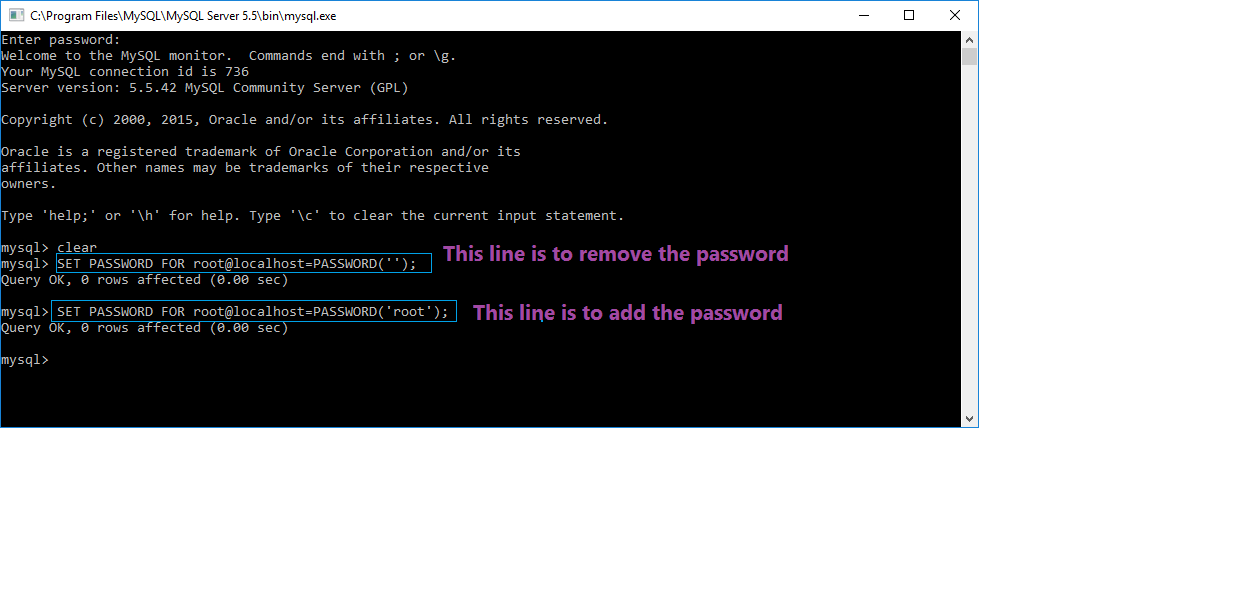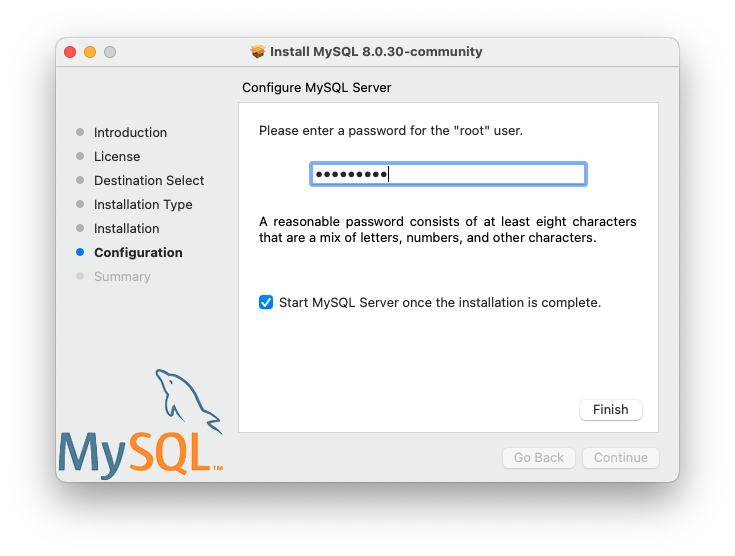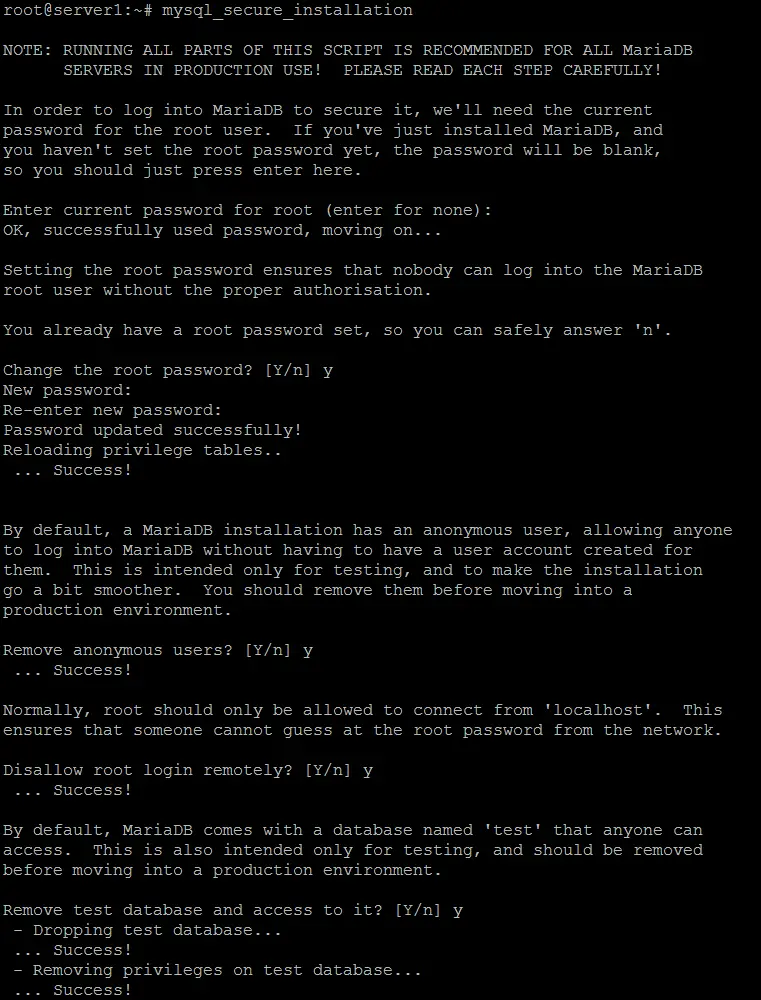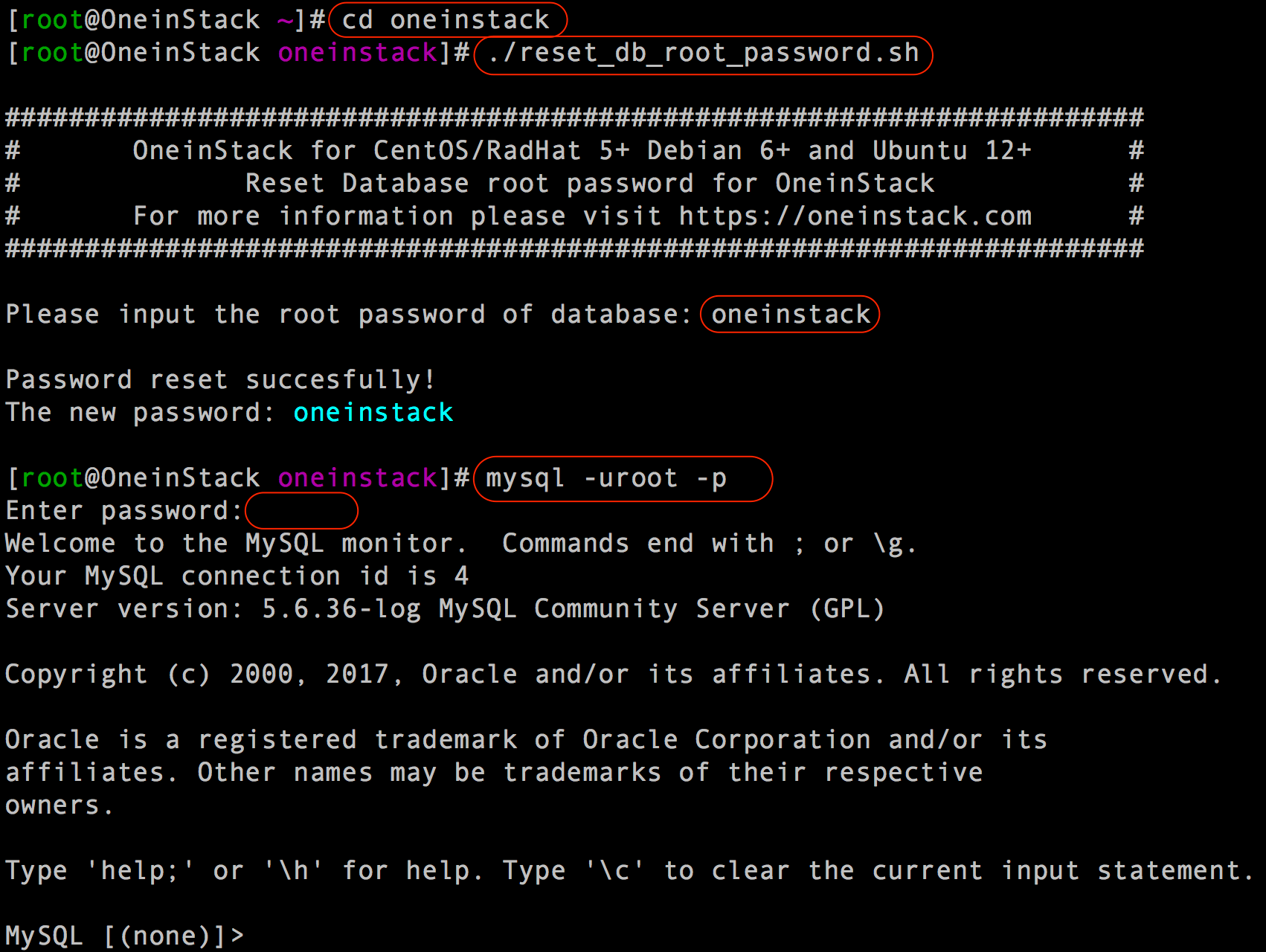Step 1: Stop MySQL service: Typically this can be done from ‘System Preferences‘ MySQL ‘Stop MySQL Server‘ Step 2. In your case, I'd try /usr/local/mysql/bin/mysql -u root -p then hit enter. Mysql will prompt you for your password - type in in and hit enter again. If it's wrong mysql will let you know and then you'll have to go about resetting the mysql root password.
NOTE: We are in the process of modifying the configuration for many Bitnami stacks. On account of these changes, the file paths and commands stated in this guide may change depending on whether your Bitnami stack uses MySQL or MariaDB. To identify which database server is used in your stack, run the command below:

The output of the command indicates which database server (MySQL or MariaDB) is used by the installation, and will allow you to identify which guides to follow in our documentation for common database-related operations.
Change the MySQL root password
NOTE: When setting a new password, avoid the use of special characters or quotes, as this can sometimes cause issues when accessing the database through shell scripts.
Linux and Mac OS X
You can modify the MySQL password using the following command at the shell prompt. Replace the NEW_PASSWORD placeholder with the actual password you wish to set.

Windows
You can modify the MySQL password using the following command at the shell prompt. Replace the NEW_PASSWORD placeholder with the actual password you wish to set.

Reset the MySQL root password
Linux and Mac OS X
If you don’t remember your MySQL root password, you can follow the steps below to reset it to a new value:

Create a file in /tmp/mysql-init with the content shown below (replace NEW_PASSWORD with the password you wish to use).
If your stack ships MySQL v8.x, use this content:
Imovie apple download free. If your stack ships MySQL v5.7.x, use this content:
If your stack ships MySQL v5.6.x or earlier, use this content:
TIP: Check the MySQL version with the command installdir/mysql/bin/mysqladmin --version or installdir/mysql/bin/mysqld --version
Stop the MySQL server:
Start MySQL with the following command:
If your stack ships MySQL v8.x, use this command:
Stylus for mac pro. If your stack ships an older version of MySQL, use this command:
Restart the MySQL server:
Remove the script:
Windows
If you don’t remember your MySQL root password, you can follow the steps below to reset it to a new value:
- Stop the MySQL server using the graphic manager tool. Learn how to start or stop the services.
Check the MySQL version:
Create a file named mysql-init.txt with the content shown below depending on your MySQL version (replace NEW_PASSWORD with the password you wish to use):
MySQL 5.7.x or MySQL 8.x:
MySQL 5.6.x or earlier:
Start MySQL server with the following command. Remember to replace PATH with the location in which you have saved the mysql-init.txt file:
If your stack ships MySQL v8.x, use this command:
If your stack ships an older version of MySQL, use this command:
- The --init file option is used by the server for executing the content of the mysql-init.txt file at startup, it will change each root account password.
- The --defaults-file option is specified since you have installed MySQL using the Bitnami installer.
- The --console option (optional) has been added in order to show the server output at the console window rather than in the log file.
After some minutes, hit Ctrl-C to force the shutdown.
Restart the MySQL server from the graphic manager tool.
After the server has restarted successfully, delete the mysql-init.txt file.
Step 1:Stop MySQL service:Typically this can be done from ‘System Preferences‘ > MySQL > ‘Stop MySQL Server‘
Step 2:Skipping Access Tables:Run the server in safe mode with privilege bypass.If you have installed MySQL5, fire up the Terminal window and execute
For older versions of MySQL, execute the following command
Root Password For Mysql
Step 3: Reset MySQL root password
Mysql Change Root Password Sql
Now when safe_mysqld running in one Terminal window, open up another Terminal window and execute this command

This opening up the MySQL console and opening the MySQL table so we can update MySQL root user. Write the reset query into the console as follows:
1. For MySQL 5.7+
As of MySQL 5.7, the password field has been renamed authentication_string. When changing the password, use the following query to change the password.
Change Root Password For Mysql
Change out NEWPASSWORD with whatever password you want. Should be all set!
2. For MySQL 5.6 and below:
Change out NEWPASSWORD with whatever password you want. Should be all set!
Step 4: Restart MySQL service:Once you’ve done that just exit the console “exit;” close the safe_mysqld execution and restart your MySQL server. Typically this can be done from ‘System Preferences‘ > MySQL > ‘Start MySQL Server‘
